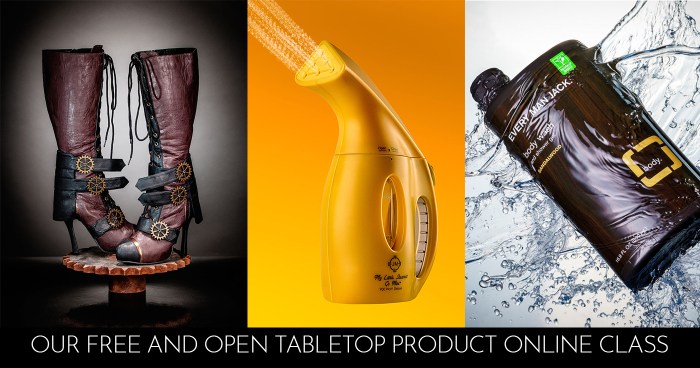Product Photography Essentials take center stage in this guide, shedding light on the key aspects of creating stunning product images that resonate with customers in the competitive e-commerce landscape.
From understanding the importance of high-quality product photography to mastering the art of editing and retouching, this journey will equip you with the necessary tools to elevate your product imagery game.
Importance of Product Photography
In the world of e-commerce, high-quality product photography plays a crucial role in attracting customers and driving sales. When customers are unable to physically touch or see a product in person, the images they see online become their main point of reference.
Impact on Sales and Customer Perception
Good product images can make or break a sale. Clear, detailed photos that showcase the product from various angles and in different settings help customers make informed decisions. High-quality photography builds trust with customers and gives them confidence in the product they are considering purchasing. This positive perception can ultimately lead to increased sales and repeat business.
Role in Branding and Marketing Strategies
Product photography is not just about showcasing the features of a product; it also plays a crucial role in branding and marketing strategies. Consistent, visually appealing images help establish a brand identity and create a cohesive look across all marketing channels. By investing in professional product photography, businesses can differentiate themselves from competitors and create a strong visual presence in the market.
Equipment Needed

To capture high-quality product images, you’ll need the right equipment. Each piece plays a crucial role in ensuring your photos look professional and appealing.
Camera
Your camera is the most important tool for product photography. Choose a DSLR or mirrorless camera with manual settings for full control over your shots. Make sure it has a high resolution to capture fine details.
Lighting
Good lighting is key to showcasing your products effectively. Invest in softboxes, light stands, and reflectors to create a well-lit setup. Consider natural light for a softer, more natural look.
Backdrop
A clean, neutral backdrop helps your products stand out. Opt for seamless paper, fabric, or vinyl backdrops in white, black, or gray. Avoid distracting patterns or colors that take attention away from your products.
Accessories
Accessories like tripods, remote shutter release, and props can enhance your product shots. A tripod ensures stability, while a remote shutter release reduces camera shake. Props add context and visual interest to your photos.
Setting Up a Photoshoot
Setting up a photoshoot for product photography is crucial to ensure your images turn out professional and visually appealing. Here’s a step-by-step guide on how to set up a product photoshoot:
Importance of Lighting, Product Photography Essentials
- Lighting is key in product photography as it determines the overall look and feel of your images.
- Use natural light or artificial lighting setups to properly illuminate your products.
- Consider using diffusers or reflectors to control harsh lighting and shadows.
Importance of Composition
- Composition plays a vital role in product photography by highlighting the key features of your products.
- Ensure your products are properly centered and framed within the shot for a visually pleasing composition.
- Experiment with different angles and perspectives to create dynamic compositions.
Importance of Styling
- Styling your products appropriately can enhance the overall look and appeal of your images.
- Consider using props or backgrounds that complement your products without overpowering them.
- Pay attention to details like color coordination and textures to create a cohesive and visually appealing image.
Creating Consistency
- Establish a consistent style guide for your product photography to maintain a cohesive look across all images.
- Use the same backgrounds, lighting setups, and props to create a unified brand aesthetic.
- Edit your images consistently to ensure color accuracy and overall coherence in your product photography.
Editing and Retouching: Product Photography Essentials

Editing and retouching play a crucial role in product photography as they help enhance the overall appeal of the images, making the products more attractive to potential customers. By refining the visual elements, adjusting colors, removing imperfections, and optimizing details, post-processing can make a significant difference in the final presentation of the products.
Techniques for Editing and Retouching
- Adjusting brightness and contrast to improve overall image quality.
- Removing backgrounds or distractions to focus solely on the product.
- Enhancing colors to make the product look more vibrant and appealing.
- Sharpening details to highlight specific features of the product.
- Removing imperfections such as dust, scratches, or blemishes to ensure a flawless presentation.
Use of Software Tools
- Adobe Photoshop and Lightroom are popular software tools used for editing product photos.
- Photoshop offers advanced editing capabilities, including precise adjustments, layering, and retouching tools.
- Lightroom provides a user-friendly interface for basic editing tasks like color correction, cropping, and enhancing details.
- Both tools offer a wide range of filters, effects, and tools to customize product images according to specific requirements.
Different Types of Product Shots
When it comes to product photography, there are various types of product shots that you can use to showcase your products effectively. Each type serves a different purpose and can help highlight different aspects of your products. Let’s explore some of the most common types of product shots and when to use them.
White Background Shots
White background shots are clean, simple, and focus solely on the product itself without any distractions. They are commonly used for e-commerce websites and catalogs to give a professional look to the products. This type of shot works well for products that need to stand out on their own without any context or background noise.
Lifestyle Shots
Lifestyle shots depict the product being used in real-life situations or scenarios. These shots help customers visualize how the product fits into their lives and how it can be beneficial to them. Lifestyle shots are great for products that are meant to enhance a certain lifestyle or solve a specific problem for the customers.
Detail Shots
Detail shots focus on highlighting specific features, textures, or intricate details of the product. These shots are perfect for showcasing the quality and craftsmanship of the product. Detail shots are commonly used for products like jewelry, electronics, or any item with intricate design elements.
Now that you have an understanding of the different types of product shots, you can choose the right type for each product to create a visually appealing and engaging product gallery.